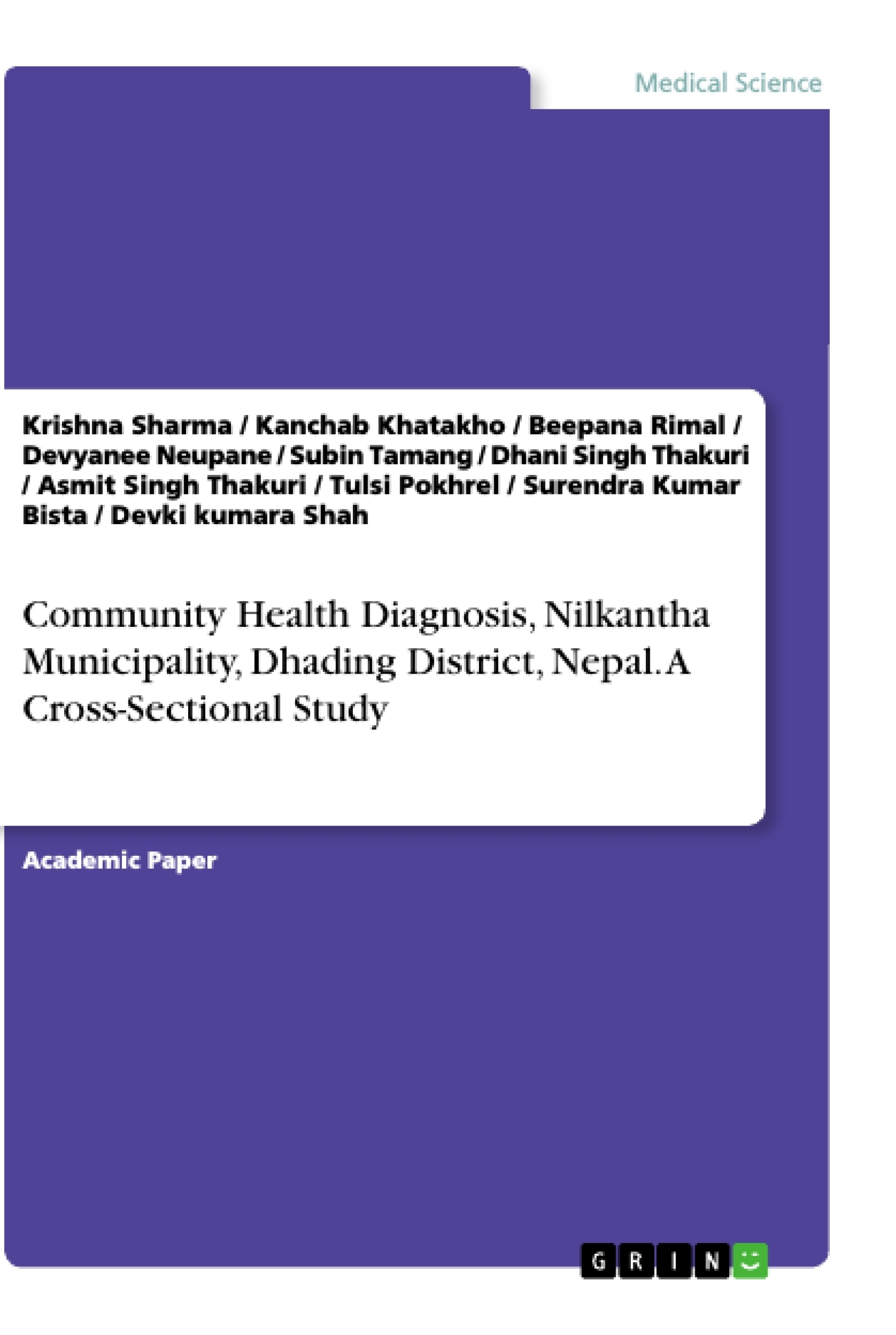Community health diagnosis usually refers to the identification of health problems in the general population in terms of mortality and morbidity rates and ratio, and to identify their correlates to identify those at risk or those in need of health care. The community health diagnosis program was successfully implemented in Ward number 09 of Nilkantha Municipality, Dhading District, Nepal, in accordance with the general objective of assessing the overall health status of people, disease intervention, healthcare service utilization pattern, and the available resources in the community.
The authors concluded some significant health issues were founded such as the use of inadequate water purification methods, improper information on six steps for handwashing, solid waste management, insufficient information about the causes of infectious diseases, lack of knowledge on free healthcare services and their utilization, unhealthy dieting habits, traditional beliefs of non-communicable disease, misinformation about the consequences of malnutrition, disease epidemics, and disasters.
Inhaltsverzeichnis (Table of Contents)
- ACKNOWLEDGEMENT
- TEAM MEMBERS
- ACRONYMS
- EXECUTIVE SUMMARY
- CHAPTER 1: INTRODUCTION
- 1.1 Background of the Study
- 1.2 Statement of the Problem
- 1.3 Objectives of the Study
- 1.3.1 General Objectives
- 1.3.2 Specific Objectives
- 1.4 Significance of the Study
- 1.5 Scope and Limitation of the Study
- 1.6 Definition of Terms
- CHAPTER 2: LITERATURE REVIEW
- CHAPTER 3: MATERIALS AND METHODS
- 3.1 Study Design
- 3.2 Study Setting
- 3.3 Study Population and Sampling
- 3.3.1 Study Population
- 3.3.2 Sampling Procedure
- 3.3.3 Sample Size
- 3.4 Data Collection Tools and Techniques
- 3.4.1 Data Collection Tools
- 3.4.2 Data Collection Techniques
- 3.5 Data Analysis
- CHAPTER 4: RESULTS
- 4.1 Socio-demographic Characteristics
- 4.1.1 Religion
- 4.1.2 Literacy
- 4.1.3 Occupation
- 4.1.4 Economic Status
- 4.2 Environmental Health and Hygiene
- 4.2.1 Water Source
- 4.2.2 Water Purification
- 4.2.3 Sanitation
- 4.2.4 Solid Waste Management
- 4.3 Health Status of the Community
- 4.3.1 Morbidity Pattern
- 4.3.2 Mortality Pattern
- 4.4 Health Service Utilization Pattern
- 4.4.1 ANC Care
- 4.4.2 PNC Care
- 4.4.3 Immunization Coverage
- 4.4.4 Family Planning Services
- 4.4.5 Treatment Seeking Behaviour
- 4.5 Existing Health Resources
- 4.5.1 Health Post
- 4.5.2 Female Community Health Volunteers (FCHVs)
- 4.5.3 Traditional Birth Attendants (TBAs)
- 4.5.4 Other Health Facilities
- CHAPTER 5: DISCUSSION
- 5.1 Socio-demographic Characteristics
- 5.2 Environmental Health and Hygiene
- 5.3 Health Status of the Community
- 5.4 Health Service Utilization Pattern
- 5.5 Existing Health Resources
- CHAPTER 6: CONCLUSION AND RECOMMENDATIONS
Zielsetzung und Themenschwerpunkte (Objectives and Key Themes)
This report aims to assess the overall health status of Ward No. 9 in Nilkantha Municipality, Dhading, Nepal, and to identify the key health issues present in the community. The report also analyzes the community's healthcare service utilization patterns and available resources.
- Socio-demographic characteristics of the population
- Environmental health and hygiene practices
- Morbidity and mortality patterns within the community
- Healthcare service utilization, including ANC, PNC, immunization, and family planning
- Availability and accessibility of health resources, such as health posts, FCHVs, and TBAs
Zusammenfassung der Kapitel (Chapter Summaries)
- Chapter 1 introduces the study, outlining the background, problem statement, objectives, significance, scope, limitations, and definition of terms.
- Chapter 2 presents a comprehensive literature review on community health, relevant to the study context.
- Chapter 3 details the materials and methods used in the study, including the study design, setting, population, sampling procedure, data collection tools and techniques, and data analysis.
- Chapter 4 presents the results of the study, covering socio-demographic characteristics, environmental health and hygiene practices, health status, healthcare service utilization patterns, and existing health resources.
- Chapter 5 discusses the findings presented in Chapter 4, providing insights and interpretations of the data collected.
Schlüsselwörter (Keywords)
Community health diagnosis, health status assessment, healthcare service utilization, environmental health, hygiene practices, morbidity, mortality, Nepal, Nilkantha Municipality, Ward No. 9, socio-demographic characteristics, health resources, FCHVs, TBAs, ANC, PNC, immunization, family planning.
- Citar trabajo
- Krishna Sharma (Autor), Kanchab Khatakho (Autor), Beepana Rimal (Autor), Devyanee Neupane (Autor), Subin Tamang (Autor), Dhani Singh Thakuri (Autor), Asmit Singh Thakuri (Autor), Tulsi Pokhrel (Autor), Surendra Kumar Bista (Autor), Devki kumara Shah (Autor), 2018, Community Health Diagnosis, Nilkantha Municipality, Dhading District, Nepal. A Cross-Sectional Study, Múnich, GRIN Verlag, https://www.grin.com/document/990578



